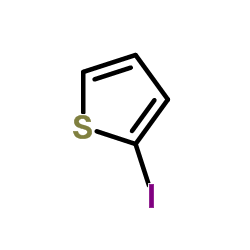Cross-coupling reactions of alkenylsilanolates. Investigation of the mechanism and identification of key intermediates through kinetic analysis.
Scott E Denmark, Ramzi F Sweis
Index: J. Am. Chem. Soc. 126(15) , 4876-82, (2004)
Full Text: HTML
Abstract
The mechanism of the fluoride-free, palladium-catalyzed cross-coupling reaction of potassium (E)-heptenyldimethylsilanolate, K(+)(E)-1(-), with 2-iodothiophene has been investigated through kinetic analysis. The order of each component was determined by plotting the initial rates of the reaction against concentration. These data provided a mechanistic picture which involves a fast and irreversible oxidative insertion of palladium into the aryl iodide and a subsequent intramolecular transmetalation step from a complex containing a silicon-oxygen-palladium linkage. First-order behavior at low concentrations of silanolate with excess palladium(0) complex supports the formation of this complex as the turnover-limiting step. The change to zeroth-order dependence on silanolate at high concentrations is consistent with the intramolecular transmetalation becoming the turnover-limiting step.
Related Compounds
| Structure | Name/CAS No. | Molecular Formula | Articles |
|---|---|---|---|
 |
2-Iodothiophene
CAS:3437-95-4 |
C4H3IS |
|
Rapid homogeneous-phase Sonogashira coupling reactions using...
2001-06-15 [J. Org. Chem. 66(12) , 4165-9, (2001)] |
|
Stereospecific preparation of (Z)- and (E)-2,3-difluoro-3-st...
2005-12-23 [J. Org. Chem. 70(26) , 10743-6, (2005)] |
|
Near ultraviolet photochemistry of 2-bromo- and 2-iodothioph...
2015-06-14 [J. Chem. Phys. 142 , 224303, (2015)] |
|
Thin conductive coatings formed by plasma polymerization of ...
[Surf. Coat. Technol. 59(1) , 359-64, (1993)] |